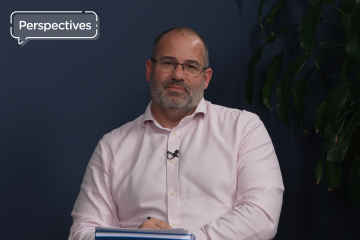

There are many different types of self-harm and they’re not always easy to notice. Many people who self-harm, whether they're children or adults, do so in secret and try to keep the areas they've cut, burned or injured hidden from their parents and friends.
Self-harm signs to look out for
So, how can you tell if someone you care about might be self-harming? Here are six signs of self-harm to look out for:
- Unexplained cuts, bruises or burns, often on their wrists, arms, thighs and chest
- Wearing long sleeves and trousers or tights, even in hot weather
- Refusing to get changed in front of other people, for example, for PE or in changing rooms
- Signs they've been pulling their hair out
- Changes in eating habits - over-eating or under-eating
- Exercising excessively
Dr Hayley van Zwanenberg, Medical Director and Consultant Child and Adolescent Psychiatrist at Priory Hospital Woodbourne, Birmingham, explains what steps to consider if you discover a child is self-harming:
“Many young people self-harm, and many other people find this behaviour incredibly hard to comprehend or know what to do to help. However, research shows that the way the person is responded to the first time they tell someone they're self-harming, will affect their future likelihood of asking for help. If the situation is calmly managed, this helps the young person to feel safe and begin to think they may be safe enough to change.
"Young people need to feel listened to and understood, rather than criticised for how they're feeling. The comments below in red can be very invalidating for a young person, while those in blue can be very supportive.
- You are the only one who feels that way
- I can understand why you would feel like that
- It can't be that bad
- That's a lot to deal with
- There is no reason to get upset
- That must really hurt
Self-harm advice
"To help keep a young person who's self-harming safe at home I would recommend that you:
1. Have a look around your home and remove everyday items such as razor blades, pencil sharpeners and scissors that don't need to be left lying around and could be used for self-harm
2. Ensure any medications that aren't needed are disposed of and any remaining medications are in a locked cabinet
3. Talk to the young person about how you can help if they're having self-harm thoughts. Consider if there's a signal they may be willing to give you before self-harm happens such as squeezing your hand or asking to do a specific form of distraction with you, or giving you a red card. Young people sometimes find this easier than vocalising how they're feeling. Ask them how they would want you to react if they give you this signal. It may be that taking the dog for a walk with them following that signal is enough for them to feel soothed and prevent self-harm
4. Try to think if there are any patterns to when the young person self-harms; if there are particular triggers or early warning signs of distress. If there are, consider how these could be safely managed
5. Help the young person think of, and practise, healthy coping strategies that they can use when there are early signs they're becoming distressed. Emotions don't last forever. If you can buy some time with healthy coping strategies, the young person may have achieved a sufficient change in their emotional state to prevent self-harm. Suggested healthy coping strategies include:
- Listening to loud music
- Writing a poem
- Expressing your feelings through your art – then change it – make it less threatening
- Counting down in 7s from a very high number
- Concentrating on saying the alphabet backwards
- Stroking your pet
- Biting on a lemon or a chilli
- Holding ice tightly in your hand until it melts
- Watching a film – a funny one or a scary one - to change your emotions
- Going for a walk with a relative/friend or pet
- Talking to someone who makes you laugh
6. If you have serious concerns and you don't feel that these measures are helping keep the young person safe, or leading to improvements, contact your GP or find out more information about self-harm treatment. In an emergency, use your local accident and emergency service.
"Self-harming is often seen to be attention-seeking or manipulative behaviour because it’s not understood. People self-harm it because they're trying to demonstrate that they're struggling with issues and they cannot verbalise or express these in a more appropriate way. If they feel supported, understood and can learn healthy ways to cope with these issues, they have a good chance of gradually ceasing the unhealthy methods they previously used to get by.”



